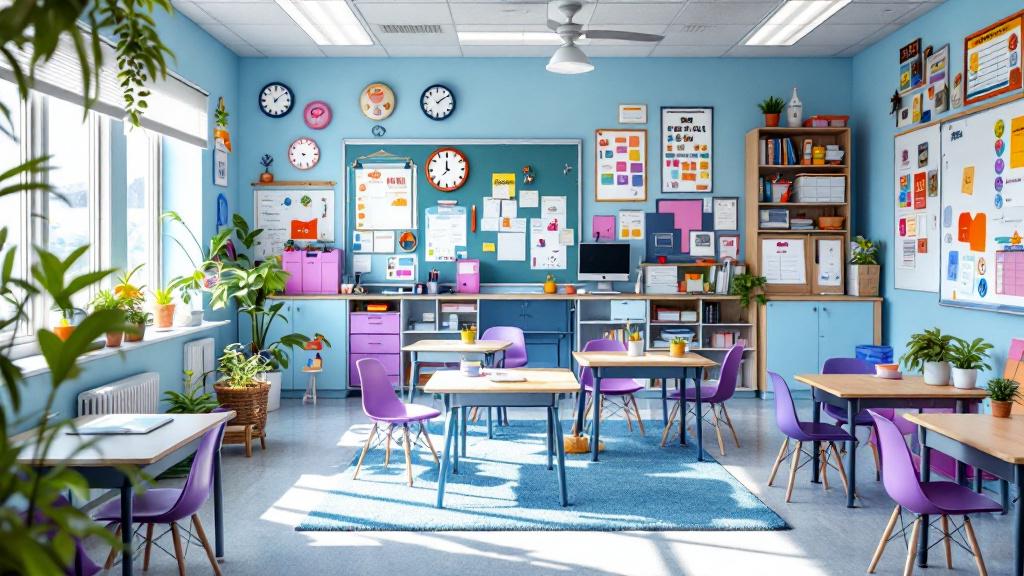Understanding Incidental Teaching in ABA
Incidental teaching is a pivotal naturalistic approach within Applied Behavior Analysis (ABA) therapy that capitalizes on everyday interactions and children’s natural interests to facilitate skill development. Unlike traditional structured methods, incidental teaching creates meaningful learning moments embedded within routine activities, making it especially effective for young children, including those on the autism spectrum. This approach emphasizes child-led learning, promoting motivation, generalization, and independence by integrating educational opportunities into natural environments such as home, school, and community settings.
What is Incidental Teaching in ABA Therapy?
Basic definition and principles of incidental teaching
Incidental teaching is a naturalistic approach used in ABA therapy that focuses on transforming everyday activities into opportunities for learning. It leverages the child's own interests and natural motivation to promote skill development. Unlike structured teaching methods, incidental teaching occurs spontaneously within the child's routine environment, making learning more relevant and engaging.
The core idea is to follow the child's lead, creating situations where they are naturally interested. For example, if a child plays with a toy car, an adult might seize that moment to teach related skills like requesting, labeling, or commenting without interrupting the child's play.
This method involves key steps such as observing what interests the child, prompting responses if needed, and giving immediate reinforcement — like praise or access to objects — to encourage continued participation. Over time, these interactions support language, social skills, and adaptive behaviors, especially in children with autism.
Relation to ABA and natural environments
Incidental teaching is deeply rooted in ABA principles, particularly those emphasizing natural environments and child-led activities. It aligns with the idea that learning is most effective when embedded within contextually meaningful situations. This makes it different from traditional, highly structured ABA methods like Discrete Trial Training.
Since incidental teaching occurs during usual routines—mealtime, playtime, community outings—it helps children generalize skills across different settings. This natural setting approach boosts motivation and makes skill acquisition more durable.
Focus on motivation and natural situations
Motivation plays a crucial role in incidental teaching. The method intentionally uses what naturally interests the child to stimulate learning. When children are engaged and motivated, they are more likely to participate actively and acquire new skills.
For example, by arranging toys out of reach or using preferred items as reinforcement, adults can prompt communication or requesting behaviors. Creating an environment that captures the child's interest encourages them to initiate interactions, which is central for language and social development.
In summary, incidental teaching blends ABA techniques with natural, everyday contexts, emphasizing child motivation and spontaneous activities to foster meaningful learning experiences.
Implementing Incidental Teaching: Methods and Strategies

What are the methods and steps involved in incidental teaching?
Incidental teaching is a natural and child-led approach that uses spontaneous situations as teaching moments. Its effectiveness relies on a series of simple, structured steps that make learning seamless and engaging. First, caregivers or teachers observe the child's interests and behavior, identifying moments where the child shows curiosity or initiates interaction.
Next, they set up an environment rich with relevant props and materials that can encourage communication or other targeted skills, such as toys or objects the child is interested in. For example, if a child plays with a toy bus, the adult might introduce opportunities to identify colors associated with the toy without interrupting the child's play.
The third step involves waiting patiently for the child to initiate communication or interaction. This might be asking a question like, "What color is this?" or simply waiting for the child to look or reach toward the object.
If the child does not initiate, prompts such as pointing or asking an open-ended question can be used to encourage participation. When the child responds correctly, natural reinforcement—like granting access to the toy or giving praise—is provided immediately.
Throughout these steps, adults consistently follow the child's lead, support their communication efforts, and gradually fade prompts to promote independence. The goal is to create meaningful, functional learning experiences embedded within typical routines, which foster skill generalization across environments.
Using positive reinforcement and repetition, while varying the difficulty of tasks, helps maintain motivation and support ongoing development. This structured yet flexible approach makes incidental teaching highly effective for developing language, social, and daily living skills in children, particularly those with autism.
Applying Incidental Teaching in Autism Interventions

How does incidental teaching support children with autism?
Incidental teaching is a teaching approach that fits naturally into daily routines and environments. It focuses on using the child's own interests and spontaneous actions to create meaningful learning opportunities. This approach is highly effective in promoting language, social, and independence skills.
In ABA therapy, incidental teaching centers around observing what captures the child's attention and then expanding on those moments. When a child initiates interaction or shows interest in an object or activity, the adult responds by encouraging vocal or gestural responses. This process involves five main steps: watching and listening, engaging, waiting for responses, providing support through prompts if needed, and confirming or reinforcing correct responses.
By doing so, children are motivated to communicate and behave in ways that are functional for real-life situations. This method helps children learn to request, comment, or share experiences, fostering greater social interaction and autonomy.
How can incidental teaching be used to teach requesting behaviors?
A primary application of incidental teaching is helping children develop requesting skills. When a child displays interest in a toy, snack, or activity, the adult creates a learning opportunity by not immediately providing the item, instead prompting the child to ask for it.
For example, if a child plays with a toy bus, the adult might ask a generic question or model a response, such as, "What do you want?" or point to the item and wait.
If the child responds, they are immediately reinforced with access to the item and praise. If not, supports like gestures, pointing, or simple prompts can be used, gradually fading as the child's skills improve.
This natural process encourages the child to use appropriate language or gestures to request, which is more meaningful than rote drills. Over time, requesting behavior becomes more spontaneous and functional, supporting better communication in everyday settings.
Examples in day-to-day activities
Incidental teaching can be seamlessly integrated into various routines:
- During mealtime: Highlighting food items and encouraging the child to request or comment.
- At playtime: Using toys or games to promote language and social turn-taking.
- Outings: Asking for items at the store or park, such as requesting a ball or pointing to animals.
- At home: Engaging in daily routines like dressing or cleaning to teach self-help skills.
In each context, the adult observes the child's interests and then creates opportunities for the child to respond and communicate.
Creating optimal environments for learning
Organizing the environment supports incidental teaching effectively. Strategies include placing appealing toys or materials out of reach but visible, encouraging the child to request access.
In addition, adults should be attentive, get close and at eye-level to maintain focus and engagement. Using clear containers for toys and providing access through requests teach children about making choices and expressing their needs.
Varying task difficulty keeps children motivated and ensures success without frustration. Prompting should be minimal, with gradual fading to help children become independent learners.
The environment should invite exploration and communication, making everyday moments rich opportunities for learning. Collaboration with multidisciplinary teams helps to tailor strategies that boost language, social skills, and independence, ultimately promoting functional and meaningful development for children with autism.
The Effectiveness and Benefits of Incidental Teaching

What are the benefits and effectiveness of incidental teaching as a teaching strategy in ABA?
Incidental teaching is regarded as a highly effective approach within ABA because it utilizes the child’s natural interests and motivations to foster learning. This strategy encourages spontaneous, child-led interactions, which significantly boost engagement and motivation. By embedding teaching moments during routine activities and natural environments, children can transfer skills across settings, promoting meaningful application of their learning.
This method emphasizes following the child's lead—waiting for responses, prompting minimally, and providing reinforcement—making learning more relevant and less stressful for the child. The approach also supports the development of communication, social, and self-help skills.
Research evidence backs its effectiveness: children in programs using incidental teaching tend to develop language skills faster, respond more socially, and become more independent. Overall, incidental teaching nurtures motivation and interest, leading to the acquisition of functional, adaptable skills that children carry beyond therapy sessions.
Practical Examples of Incidental Teaching in Action

How is incidental teaching implemented in everyday contexts?
Practical examples of incidental teaching abound in various natural settings such as meals, classrooms, community outings, and home environments. The approach hinges on observing and capitalizing on children’s spontaneous interests, turning these moments into meaningful learning opportunities.
For example, during mealtime, if a child shows curiosity about a particular food, an adult can respond by encouraging the child to request it. This might involve modeling the word or phrase, then reinforcing the child's attempt with access to the item and praise. In a classroom setting, a teacher might notice a child playing with blocks. The adult could prompt the child to comment on the blocks or request more, thereby fostering language and social skills.
Community outings also provide rich opportunities. An adult can notice when a child tries to reach for or point at something and then prompt a request or comment. For instance, if a child points to a gift shop window, the adult could encourage them to ask for a toy or comment about it. These real-life situations promote functional skills like requesting, commenting, or responding—skills vital for independence.
How does environment setup facilitate incidental teaching?
Creating an environment conducive to spontaneous learning is essential for success. It involves strategic placement of toys, materials, and props to naturally prompt communication. Items of interest should be visible and accessible enough to invite interaction but out of reach to encourage requests.
For example, toys and materials can be organized in clear bins or shelves, with some out of reach, prompting the child to request assistance or access. Displaying relevant visual supports or prompts near these items can also facilitate communication.
Adult involvement in setting up the environment includes modeling responses to children’s initiations, reinforcing correct responses immediately, and gradually fading prompts to foster independence. When children are surrounded by stimulating environments tailored to their interests, they are more motivated to engage and communicate, making incidental teaching highly effective across settings.
Multidisciplinary Support and Long-Term Impact

What role do multidisciplinary teams play in implementing incidental teaching?
Successful application of incidental teaching relies on a collaborative effort among various professionals. Teams typically consist of speech pathologists, occupational therapists, psychologists, special educators, aides, and parents. Each member brings unique expertise to the table, ensuring that the learning environment is enriching and tailored to the child's needs.
These team members work together to set appropriate developmental goals, recognize natural opportunities for learning, and implement strategies like prompting, reinforcement, and environmental arrangement. They observe how the child responds during routine activities and adjust their approaches accordingly.
Regular communication and coordinated efforts across different settings—home, school, community—are essential. This collaboration helps create a seamless learning experience that encourages skill-building and promotes consistency, which is crucial for generalization of skills.
How does incidental teaching encourage generalization and independence?
One of the main strengths of incidental teaching is its emphasis on natural environments, which seamlessly promotes skill transfer across contexts. Because learning occurs during real-life activities like meals, play, or community outings, children are more likely to apply what they learn outside therapy sessions.
Encouraging independence involves supporting children to initiate interactions, make requests, and participate actively in their routines. Prompt fading and reinforcement strategies help children develop self-regulation, problem-solving, and decision-making skills. These experiences foster autonomy, enabling children to become more independent in daily life.
As children practice skills in various environments, they build confidence and competence, leading to broader social participation and improved self-help abilities.
What are the long-term benefits of using incidental teaching with children with autism?
Research indicates that incidental teaching results in significant, lasting developmental improvements. Children often show better communication skills, including increased language use, more complex sentence structures, and greater social interactions.
Thanks to its naturalistic approach, children also develop adaptive behaviors and independence, which are essential for navigating daily life independently. This includes self-care tasks and functional communication, reducing reliance on adult support.
Moreover, the motivation and engagement fostered by incidental teaching help sustain learning over time. Children tend to retain skills and generalize them across new settings and situations, which enhances their ability to participate meaningfully in community and school environments.
Overall, incidental teaching supports a holistic growth pathway—improving not only skills but also quality of life, social inclusion, and long-term adaptive functioning. It encourages a mindset of lifelong learning and independence for children with autism.
Embracing Naturalistic Learning Strategies
Incidental teaching stands out as a highly effective, engaging, and practical approach within ABA therapy for children with autism. Its focus on leveraging natural environments, following the child's interests, and promoting functional skills makes it a cornerstone technique for fostering motivation, independence, and meaningful social interactions. Supported by a robust body of research, incidental teaching continues to demonstrate its value in improving language, social, and daily living skills. When integrated with a multidisciplinary team and tailored to individual needs, it offers sustainable benefits that can significantly enhance the developmental trajectory and quality of life for children with autism. Embracing this naturalistic method signifies a move toward more organic, child-centered therapy that respects and utilizes each child's unique preferences and capabilities.
References
- Incidental Teaching - Florida Atlantic University
- Using Incidental Teaching To Teach Children With Autism
- [PDF] Incidental Teaching - Knapp Center for Childhood Development
- The Role of Incidental Teaching in ABA Therapy Plans
- What is Incidental Teaching in ABA?
- What Is Incidental Teaching? - WebMD
- What Is Incidental Teaching in ABA Therapy?
- Incidental Teaching - Florida Atlantic University





































































































